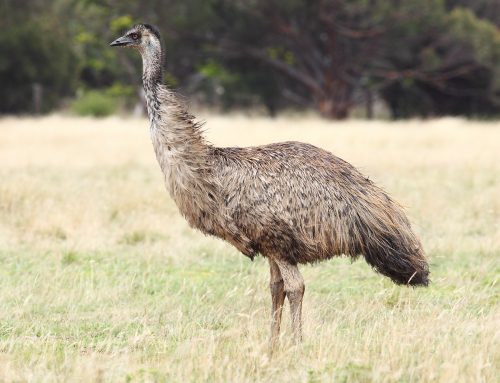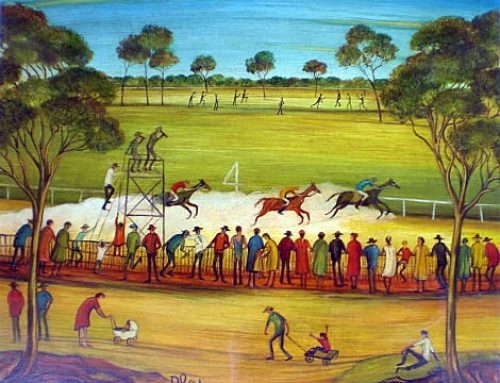Its a great pleasure to be writing a guest blog for Nicole Alexander. Thank you so much, Nicole, for the invitation to enter your virtual world. In a way I feel as if Ive already met you. This is not only from reading your two wonderful books but also because of our shared experience of being published by Random House Australia in 2010 and 2011. And also a shared love of the landscape: reading your second book recently made me feel particularly homesick for Australia (Im working in England until September this year). Your evocative writing brought the countryside in which your novels are set to life so vividly.
When did you begin writing fiction?
I began writing fiction as a child, abandoned it in my twenties and returned to writing short and infrequent – stories in the late 1990s. Id always intended to write fiction though, encouraged by my father, whose novel, Up the Dusty Track, set in the Northern Territory during the Second World War, was published in 2002. He also encouraged me to read eclectically, as did my mother.
How did the fictional town of Jingera emerge?
When I began thinking about my first novel, Stillwater Creek, I wanted to write about a remote coastal country town. Id certainly seen lots of them over the years. When I was very young, we sometimes travelled with my grandfather, a stock and station agent, as he drove about eastern Australia. He had an Armstrong Siddeley car, just like the character Peter Vincent in Stillwater Creek, but there let me hasten to say the resemblance ends. (All of my characters are most definitely fictional!) Almost every year my sister and I drove with our parents from Sydney to see relatives in Melbourne over the Christmas holidays. Those trips when I was so young made a huge impression on me, and developed my love of the small country town and of the landscape. So too did my trips as a schoolgirl to stay with friends and relatives in NSW and Victoria.
How do you find the time to write a novel when youve got a fulltime job?
The answer is straightforward (and no doubt common to most writers and I would love to hear what Nicole has to say about this): I work most of the time! Of course it helps that my kids have left home and my husbands a workaholic too. In fact creative writing is very different to my day job. Its actually relaxing to write creatively because its so different. You can be less precise. You can be more poetic. You can be emotional. You can let the intuition that you normally suppress come pouring out as soon as you pick up a pencil, so that the act of writing is a release from the day-job. Sometimes its actually an escape; for example after a meeting thats lasted for far too long and left you wrung out.
And its great fun living in parallel worlds the fictional world in the country that I inhabit at night and at the weekend, and my real world of work, and being able to step in and out of each world at whim.
How do you structure your novels?
When I began thinking of Stillwater Creek, the first thing that presented itself to me was the ending, which takes place on Jingera Beach. Id had that last set of scenes in my head for ages before starting (by one of those strange quirks of timing I began to write exactly five years, to the day, before the publication date.) It took half a decade to write the book and see it published, though Id carried the ending of Stillwater Creek in my head for far longer than this.
Similarly with The Indigo Sky: the last set of scenes was already in my head as I began the detailed plotting of the novel and figuring out its structure.
My plotting is largely done at the start. This might seem very constraining to some people, but it has the great virtue of allowing me to keep track of where I am. And while much of this detailed preplanning goes out the door as the novel proceeds, its very helpful at the beginning.
What are the novels about?
Stillwater Creek, was set in 1957. Its about the arrival of an immigrant woman Ilona and her small daughter Zidra at a small and apparently peaceful coastal town in southern NSW, and how this sets in motion a series of events that profoundly affect the lives of the people living there.
The Indigo Sky is set in 1961-2, and is shaped by the stories of Lorna, a resilient young Aboriginal woman, and Philip, a vulnerable musical prodigy. Although from very different backgrounds Lorna is from a dispossessed and impoverished family, and Philip from a wealthy and privileged one there are parallels in their experiences. Both are thrown into tough environments and both are cut off from their families. For Lorna, censorship precludes interaction with the outside world, while Philips stutter impedes communication.
Why set the first novel in 1957?
One of the advantages of historical fiction is the opportunity it gives the writer to research the past. Theres a great delight in going to the basement of the National Library in Canberra and whizzing through the microforms of old newspapers. It is amazing what you can pick up about the time period from old copies of the Sydney Morning Herald! Political detail, fashions, wars, the shipping news, and the like. Visiting the National Archives is also a great pleasure.
But to answer the question about why set Stillwater Creek in 1957, I chose that year because I wished to focus on the moral dilemma arising when a woman discovers about her husband a secret that would have been off the social radar in that time period, and she then has to determine what action she should take. Another reason for choosing 1957 was that some of the adult characters were still bearing the scars of the Second World War and the enormous upheaval it caused in peoples lives, and I wanted to explore that a little.
What next?
Im working on my third novel, set in 1971 in Sydney, Jingera, and a little bit in Cambodia. So Im having great fun on this, as I work out what will happen to my cast of characters. And though the final scenes have already been written, I have yet to figure out quite how to get everyone there!
Biography
Alison Booth was born in Melbourne, grew up in Sydney, and has a PhD from the London School of Economics. After two decades living and working in the UK, she returned to Australia in 2002 to take up an academic post at the Australian National University. She has published short stories and two novels, Stillwater Creek in 2010 and The Indigo Sky in 2011. She is married and has two daughters, and lives for most of the time in Canberra. Her website is at: http://www.alisonbooth.net/






Leave A Comment